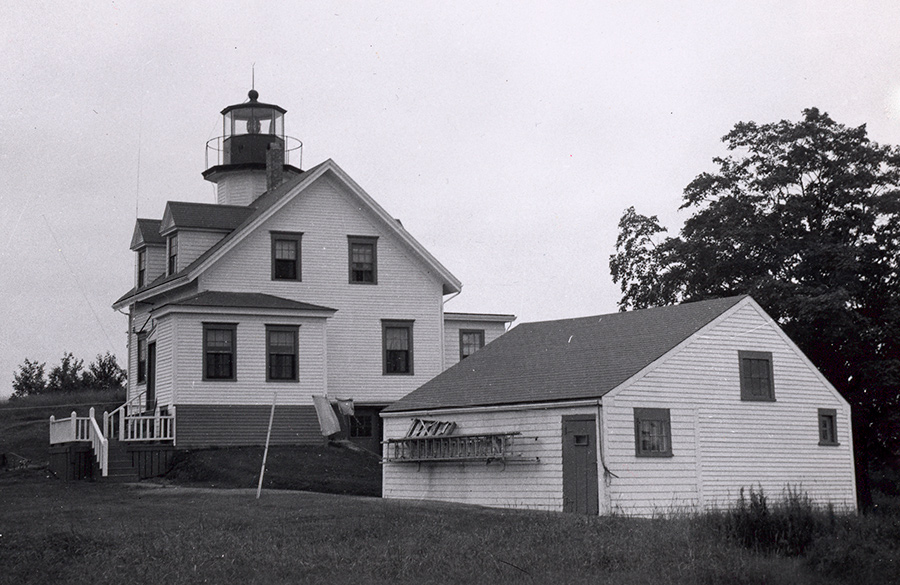A Maine Lighthouse and its Connection to a National Christmas Tree
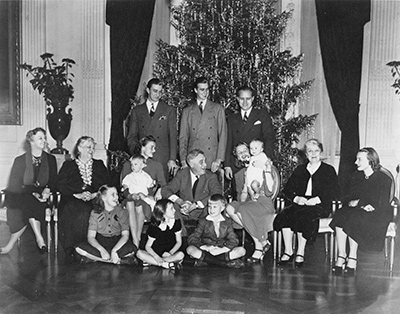
Tree of 1941.
(St. Croix Historical Society Photo)
When the Japanese attacked Pearl Harbor on December 7, 1941, the American people were thrust into a state of shock and fear as a war that was engulfing much of the world had suddenly become all too real for the United States. One day later, the United States Congress declared war on the Empire of Japan.
Four days after the Japanese attack on Pearl Harbor, Nazi Germany declared war on the United States. Whether the country wanted to or not, America was now forced to enter World War II on a full scale – there would be no turning back.
These nation-altering events, which were occurring during the Christmas season, naturally dampened the country’s mood for the holidays. This would not be the traditional warm and spirited Yuletide season that Americans had grown accustomed to. An undeniable air of uncertainty loomed large over the nation, forcing the people to muster resolve and courage in every aspect of their lives.
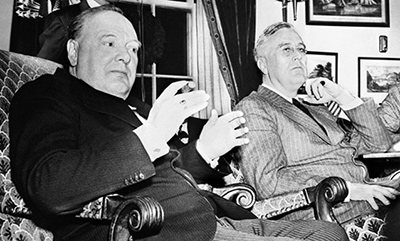
(National Park Service photo)
The air of uncertainty was so great that our nation’s leaders mulled over the idea of cancelling the National Christmas Tree lighting event in Washington that year. Christmas traditions at the White House would undergo a transformation in 1941. According to The White House Historical Association, “After the surprise attack at Pearl Harbor, national defense and public safety became major priorities for the federal government. Some even advocated cancelling the National Christmas Tree lighting that year, fearing that America’s enemies might attack the 40,000 expected attendees.”
A news correspondent at the time noted, “War and blackouts notwithstanding, plans are going forward for the public to be admitted to the White House south grounds Christmas Eve for the lighting by President Roosevelt of the National Community Christmas Tree.”
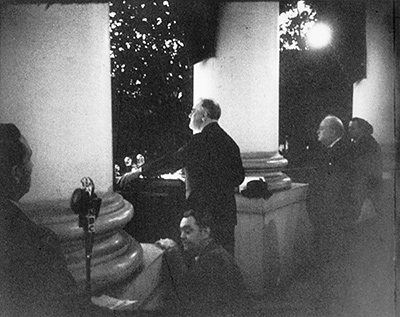
(National Park Service photo)
The White House Historical Association went on to note, “Additional security precautions were taken as President Roosevelt, joined by British Prime Minister Winston Churchill, illuminated the Christmas tree from the South Portico. In his address, Roosevelt acknowledged that some considered it inappropriate to light trees and give gifts this season under the circumstances. However, he reasoned that the ‘dignity and brotherhood of man which Christmas Day signifies- more than any other day or any other symbol’ would serve as the country’s greatest weapon against ‘enemies who preach the principles of hate and practice them.’”
No doubt the National Christmas Tree took on an even greater importance, symbolizing more than the holiday season in 1941. The tree was not only adorned with decorations and lights, but unity and hope as well.
But where did this tree come from?
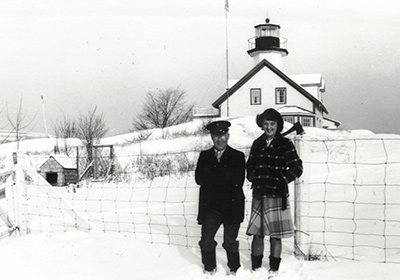
(American Lighthouse Foundation photo)
The tree that would become the National Christmas Tree in 1941 was cut down on St. Croix Island (locally known as Dochet Island), which was home to the St. Croix River Lighthouse along the international border between the United States and Canada. A lighthouse was first established on the island in 1857 and later rebuilt in 1901.
Unbeknownst to St. Croix River lightkeeper Elson Small and his wife Connie Scovill Small, they were destined to be a part of history just one day after the United States declared war on the Empire of Japan.
According to the St. Croix Historical Society, “When in the fall of 1941 a group of Calais notables, including the eminent historian Ned Lamb and businessmen John Trimble and Arthur Unobskey, wrote to President Roosevelt offering the White House a Christmas tree from St. Croix Island for the holidays, they had no reason to anticipate the momentous events which were to occur just after the President’s reply to their letter dated November 28, 1941:
THE WHITE HOUSE
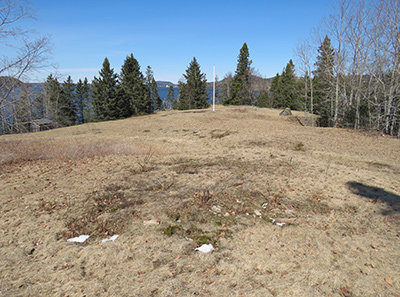
(Photo by Bob Trapani, Jr.)
“We should be very happy indeed, to have the Christmas tree from the island near Calais, Maine. It would be just like something from home. As you know, I have a fifty year familiarity with every inch of the St. Croix River up to and beyond Calais.
“By the way, the actual site of settlement of De Monts and Champlain has never been definitely proved. I wish you would get some members of the Maine historical society, probably with the aid of a New Brunswick historical society, to try to make a definite determination of this. There are several islands, including the one which forms the harbor of St. Andrews, N. B. which claim the honor. As far as I know, no one has ever dug thoroughly to discover foundations, pewter ware, or other traces. Such traces must exist.
“It would be a nice thought to have the Christmas tree from the city where the first Christmas observance on the northern coasts United States was held.”
Very sincerely yours,
Franklin D. Roosevelt
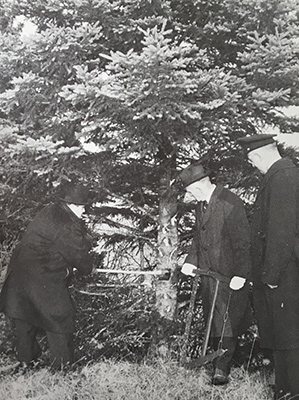
(American Lighthouse Foundation photo)
The reply was not received until early December and the Calais folks made haste to obtain the tree which was, after all, on St Croix Island with which communications in those days were not easy.
In her book entitled, The Lighthouse Keeper’s Wife, Connie Small eloquently described the events surrounding this historical moment, noting, “December 9, 1941, dawned cold, but sunny. Patches of snow lay here and there on the island and the mainland. There was no ice on the river; the water was calm. Elson was repairing a frayed winch rope when I saw the flag signal at the boat landing at Red Beach go up. I went down to tell Elson someone was signaling him to come ashore after them. Taking the rowboat with the outboard attached, he went ashore.”
Connie Small went on to say, “There he found Mr. John Trimble and Mr. Arthur Unobsky, two businessmen from Calais, and a Mr. Earl Doucette. Elson knew Mr. Trimble and Mr. Unobsky real well, but Mr. Doucette, who was carrying camera equipment, was a stranger. They asked Elson if he would help to add to a historical event.
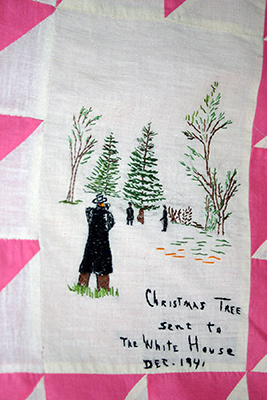
(Photo by Bob Trapani, Jr.)
“Mr. Trimble and Mr. Unobsky represented the Calais Chamber of Commerce. They introduced Mr. Doucette as the representative of the publicity bureau of the state government in Augusta.
“A beautifully shaped tree, about eighteen feet high, and one of a very few left on the island, was chosen. If it hadn’t been for a historical purpose, I would have felt quite bad to have cut it down. Mr. Doucette was to take movies and pictures for the archives in the State House in Augusta. He took several pictures of the men as they decided how many limbs to remove before cutting the tree down, but before he could get his movie equipment ready, Elson had chopped the tree to the moment it would fall. Fall it started to do, and Mr. Doucette began to holler, ‘Push it back up! I want to get movies of its falling!’ So the men, with all the brawn and muscle they could muster, pushed the tree back and then let it fall in its graceful way.”
Connie Small concluded, “Elson had to tie up this large tree, get it aboard his boat and the nine miles to Calais, to ship it by train from Calais to Washington.” Keeper Elson Small noted, “It was quite an undertaking, but I was glad to contribute to history.”
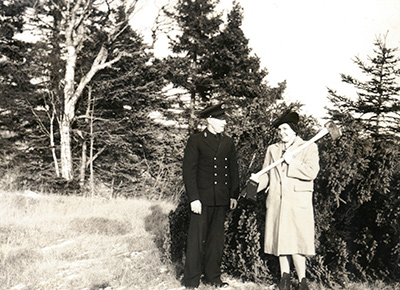
would become the White House Christmas Tree of 1941.
(American Lighthouse Foundation photo)
The St. Croix Island tree took center stage in Washington D.C. on December 24, 1941 when British Prime Minister Winston Churchill and United States President Franklin D. Roosevelt stood together in solidarity on the White House portico as the lights of the National Christmas Tree were illuminated.
It was on this Christmas Eve that Prime Minister Churchill broadcasted his Christmas message to the world from the White House. In the days leading up to Christmas, the British Prime Minister and his chiefs of staff journeyed to the United States to meet with President Roosevelt and his military leaders to garner support for defeating Nazi Germany.
In the book entitled, December 1941: 31 Days that Changed America and Saved the World, author Craig Shirley stated, “That afternoon, as the sun dipped over the horizon, Churchill and FDR both addressed a crowd of twenty thousand (attendance estimates varied widely) and the nation by radio, as the president flipped the switch to light the big Christmas tree. It was the first time the White House Christmas tree had ever actually been placed on the White House grounds. Previously, it had been on the Ellipse, Lafayette Park, and Sherman Square. The Marine Band played and the crowd sang Christmas songs including, ‘Joy to the World’ and ‘Silent Night.’”
British Prime Minister Winston Churchill’s 1941 Christmas Message:
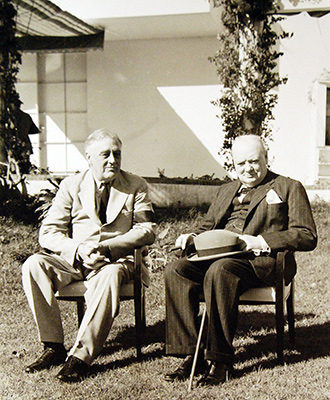
(National Park Service photo)
“I spend this anniversary and festival far from my country, far from my family, yet I cannot truthfully say that I feel far from home. Whether it be the ties of blood on my mother’s side, or the friendships I have developed here over many years of active life, or the commanding sentiment of comradeship in the common cause of great peoples who speak the same language, who kneel at the same altars and, to a very large extent, pursue the same ideals, I cannot feel myself a stranger here in the center and at the summit of the United States. I feel a sense of unity and fraternal association which, added to the kindliness of your welcome, convinces me that I have a right to sit at your fireside and share your Christmas joys.
“This is a strange Christmas Eve. Almost the whole world is locked in deadly struggle, and, with the most terrible weapons which science can devise, the nations advance upon each other. Ill would it be for us this Christmastide if we were not sure that no greed for the land or wealth of any other people, no vulgar ambition, no morbid lust for material gain at the expense of others, had led us to the field. Here, in the midst of war, raging and roaring over all the lands and seas, creeping nearer to our hearts and homes, here, amid all the tumult, we have tonight the peace of the spirit in each cottage home and in every generous heart. Therefore we may cast aside for this night at least the cares and dangers which beset us, and make for the children an evening of happiness in a world of storm. Here, then, for one night only, each home throughout the English-speaking world should be a brightly-lighted island of happiness and peace.
“Let the children have their night of fun and laughter. Let the gifts of Father Christmas delight their play. Let us grown-ups share to the full in their unstinted pleasures before we turn again to the stern task and the formidable years that lie before us, resolved that, by our sacrifice and daring, these same children shall not be robbed of their inheritance or denied their right to live in a free and decent world.
“And so, in God’s mercy, a happy Christmas to you all.”
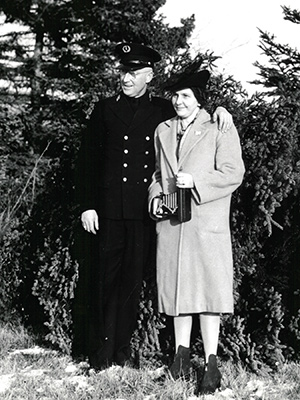
Elson and Connie Small kept the light burning bright at St. Croix River Lighthouse from 1930 to 1946 when they left the island light station for a new assignment at Portsmouth Harbor Lighthouse in New Castle, New Hampshire. St. Croix River Lighthouse was later automated in 1957, and tragically, destroyed by fire in 1976.
However, even though the lighthouse no longer physically stands on St. Croix Island, the memory of this benevolent beacon, and the event of national significance that occurred there in December 1941, continue to live on in the annals of time. The fact that a Maine lighthouse has a connection to such an important time in our nation’s history is something we can all be proud of – and a fact we should recall whenever our lighthouse heritage is remembered at Christmastime.
